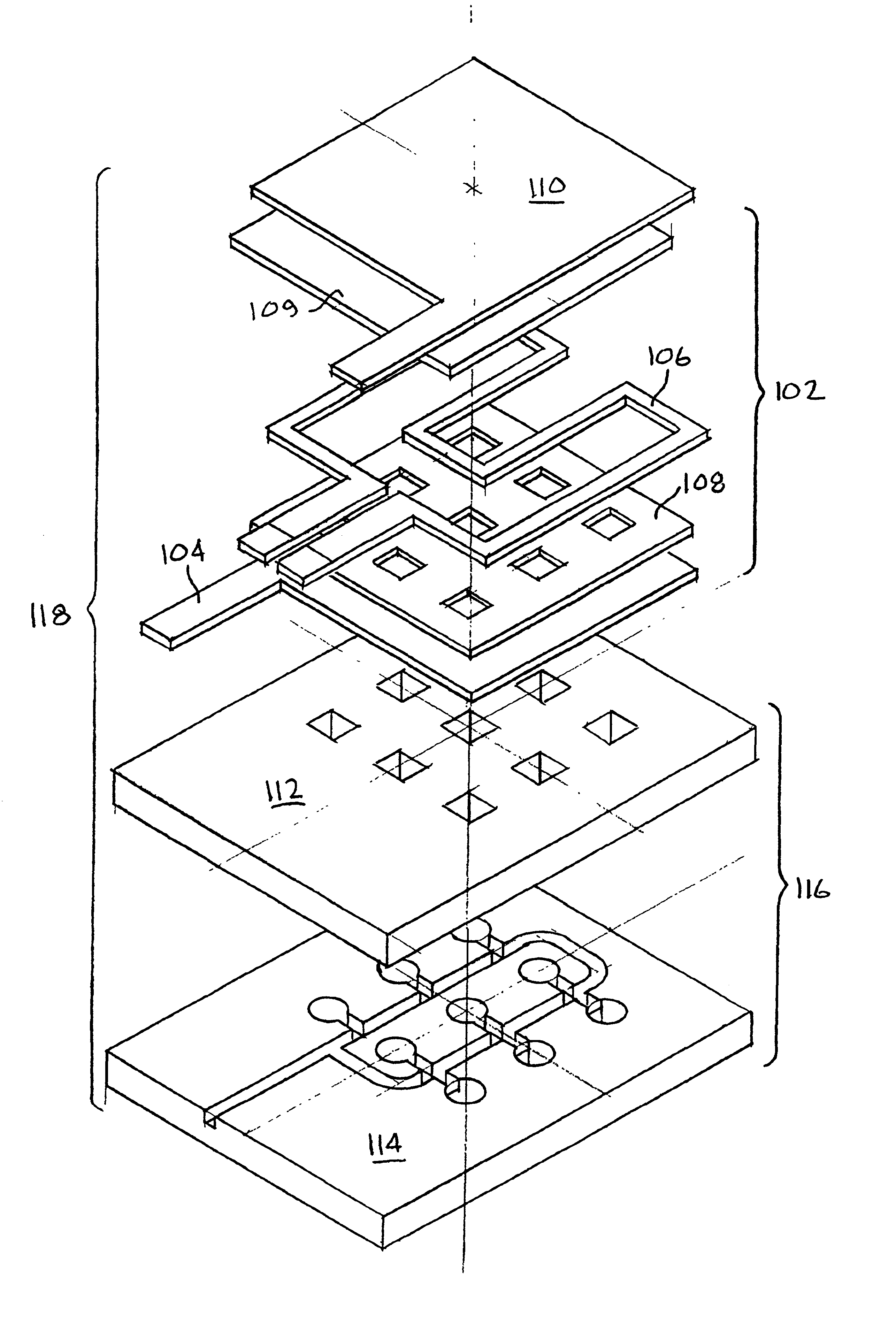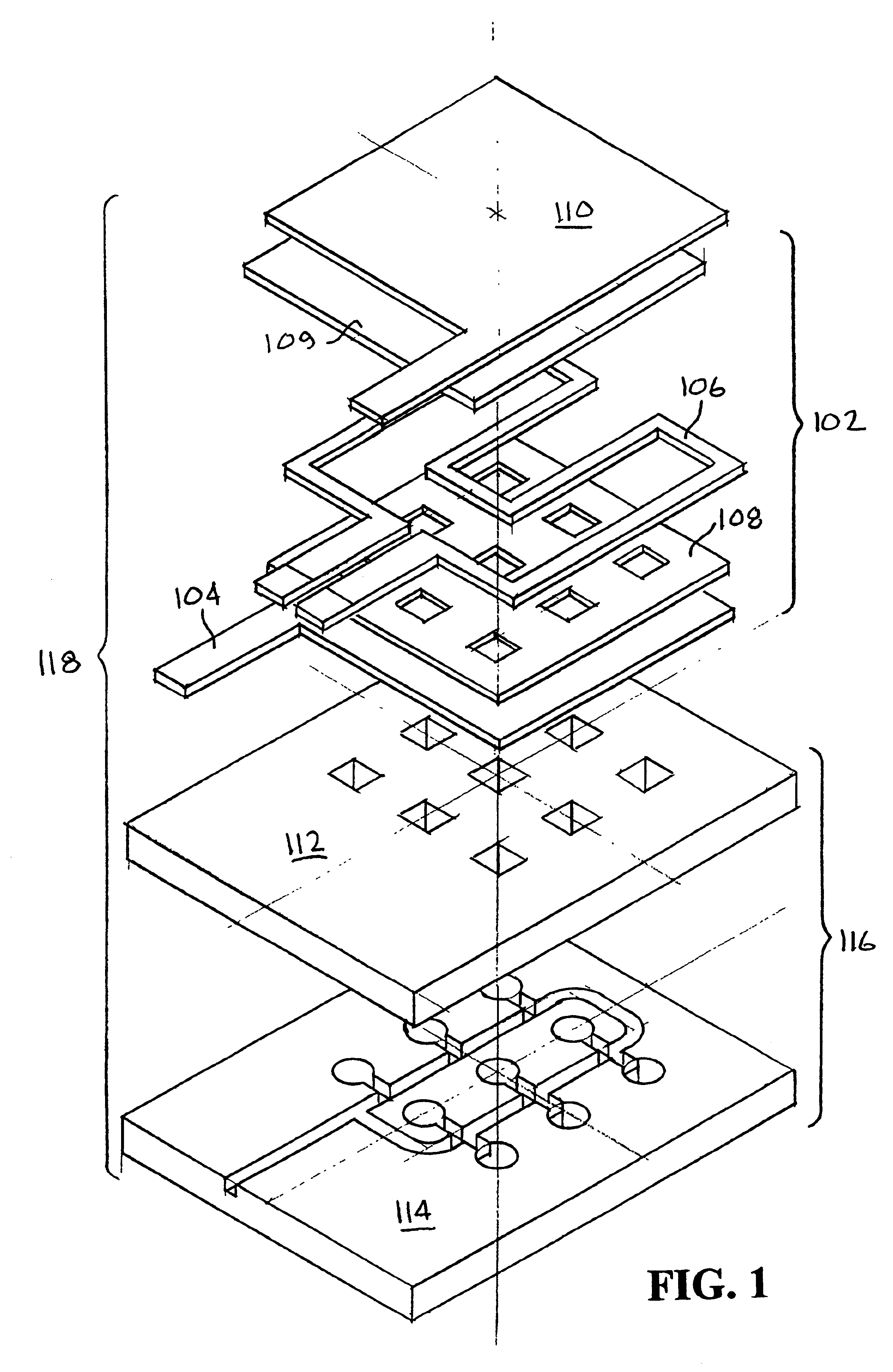Microfluidic fuel cell systems with embedded materials and structures and method thereof
- Summary
- Abstract
- Description
- Claims
- Application Information
AI Technical Summary
Benefits of technology
Problems solved by technology
Method used
Image
Examples
example 1
[0030]Pre-cured PDMS is poured onto a silicon mold with the desired design etched into it, e.g., a honeycomb array 50 microns across and 50 microns high, and degassed by placing in a vacuum. The degassing ensures that air bubbles are not trapped between the PDMS and the silicon mold. The PDMS is then cured for about 4 hours at about 75° C. The mold and the attached PDMS can then be placed into about a <50% potassium hydroxide (KOH) bath to remove the silicon. The PDMS remaining will retain the pattern of the silicon.
example 2
[0031]An array of about 100,000 small diameter posts, i.e., <10 μm, are formed on a silicon substrate by plasma etching to a height in the range of about 20 μm to about 50 μm. The silicon is then coated with gold to act as an anti-stick layer. The PDMS is then poured over the posts and cured for about 4 hours at about 75° C. The PDMS is made thin enough so the tops of the silicon posts are exposed, i.e., <20-50 μm. After curing, the PDMS is pulled off the mold, creating a porous support structure for the fuel cell anode.
PUM
| Property | Measurement | Unit |
|---|---|---|
| Temperature | aaaaa | aaaaa |
| Power | aaaaa | aaaaa |
| Diameter | aaaaa | aaaaa |
Abstract
Description
Claims
Application Information
 Login to View More
Login to View More - R&D
- Intellectual Property
- Life Sciences
- Materials
- Tech Scout
- Unparalleled Data Quality
- Higher Quality Content
- 60% Fewer Hallucinations
Browse by: Latest US Patents, China's latest patents, Technical Efficacy Thesaurus, Application Domain, Technology Topic, Popular Technical Reports.
© 2025 PatSnap. All rights reserved.Legal|Privacy policy|Modern Slavery Act Transparency Statement|Sitemap|About US| Contact US: help@patsnap.com



